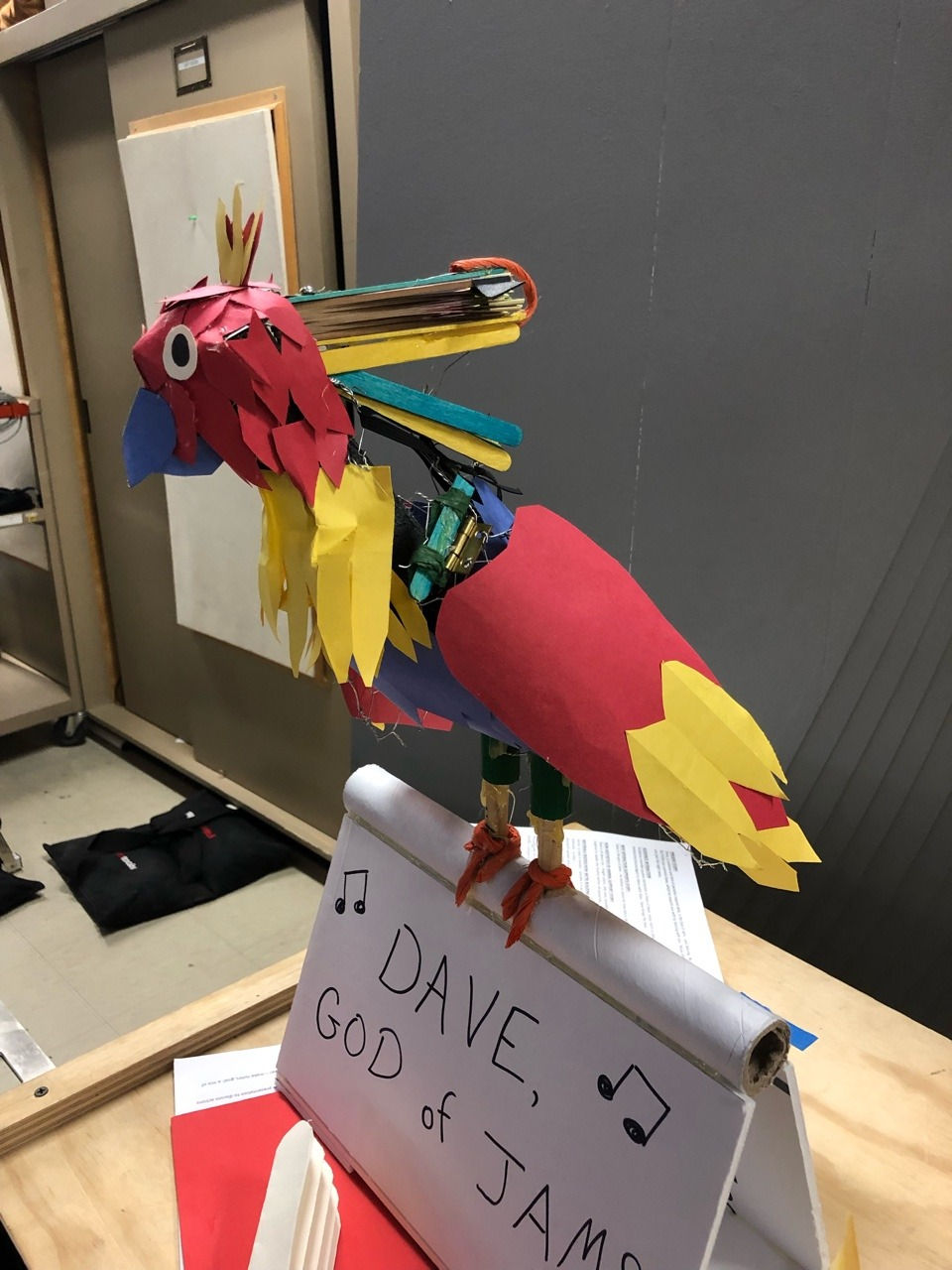Collaborative Escape Room Project
- Katherine Byers

- Apr 27, 2020
- 4 min read
Updated: Mar 7, 2021
I was a puzzle designer for the 2019 Collaborative Escape Room Project with Texas Applied Arts. Below is a description of the theme of the room as well as a video walking through the final product and showcasing a little bit of the process.
Based on a concept by Sven Ortel and Michael Baker: "In the near future, four researchers are stranded on a distressed weather research station in the Gulf of Mexico during a violent hurricane. With their rescue pod disabled and the storm gaining strength by the minute, they must find a way to warn the mainland of the coming disaster and escape the station before it’s too late."
My role as puzzle designer was to work with a team of other designers to conceptualize and execute the various puzzles around the room. The puzzles I worked with directly were the interactive map, as well as the security question puzzle in order to open the XR room. The security question was inputting a code (found by looking out the windows of the station) into a terminal in order to "authenticate" the user. Once the code was inputted, a maglock disengaged and allowed the door to the "AI Heart" or XR room to open. From there, one (or more) players will be stationed in the XR Room in order to find the proper positioning for the buoys, and the other players will be stationed on the outside by the map in order to place them on the board physically. The buoys are positioned off on the right-hand side of the map for easy access, and as each buoy is placed correctly on the map, the projection onto the map will change and show a little bit more of the storm as it approaches. The players then can press a button to send the data and leave through the escape pod. The players will then be presented with end/post game dialogue congratulating them on sending the data as it will help the coastal cities immensely. If the players do not successfully send the data by 28:00 minutes into the game, the escape pod will open automatically and the players can still escape, but the end/post game dialogue will not congratulate them on sending the information.

The map is (in its current iteration) built out of wood and hung using a cleat (a small piece of wood cut at an angle to hang on a matching piece put on the wall). Holes are drilled into box on a semi-coordinate system. The physical map has a projection overlayed on top of it which will show the actual coordinate system. The holes were placed in predetermined positions by the Interactive Media students to match up with the projection and the map in the XR room. On the back of each hole is a washer to act as a barrier between the reed switch and the buoys themselves. It also gives tactile feedback to the player when the buoy is placed all the way in. Attached to the back of the washer is the reed switch itself. When the magnet gets close to the switch, it closes the circuit and sends a signal to the Arduino which then interacts with Unity to confirm that it is in the correct position and update the projections in the XR room and on the map.

I originally wired the map using magnetic hall sensors, and then switched after our first play test to reed switches that had been recommended to us. The hall sensors had issues with reversing polarity randomly, as well as being overall less sturdy than the other components of the room. I cannot count the number of sensors I broke or had to replace because they got twisted slightly too much. The reed sensors are much more sturdy and reliable, and a fantastic addition to the project. I no longer needed to worry as much about people slamming the buoys in the holes since the reed sensors could take a little bit of a beating. The only possible issue is that reed sensors can detect a magnet from any point around them, and are not limited to a specific area like the hall sensors, however, there is no reason for a magnet to go near the backside of the map (when it is fully installed) and the holes for the buoys do not allow for horizontal motion
On a more personal note, I faced many challenges across this project. The biggest challenge for me was trying to figure out how to create something as intricate as the puzzle concept laid out before me. I do not have a lot of experience with wiring and what I did know wasn’t going to be practical for the long term survival of the room. Luckily I was able to start with what I did know, and could expand from there with the help of my teammates. I learned how to solder, to use a protoboard, to use a pullup resistor, to wire a reed switch, and how to use a few powertools along the way. I had to work with the Interactive Media class constantly, and encountered quite a few issues in regards to communication. Roles constantly changed, and scope of control with them. Oftentimes, my group would get caught in the crossfire as we tried to prototype and fabricate the puzzles. After a few missteps, we were able to find our stride and iron out most if not all the communication issues and frustration. In the end, we managed to pull together a wonderful project, that'll be showcased at South By Southwest in 2021.
Here's a link to the Texas Applied Arts website that talks about the core values of the project and a full list of credits - https://sites.utexas.edu/appliedarts/collaborative-escape-room-project/





Comments